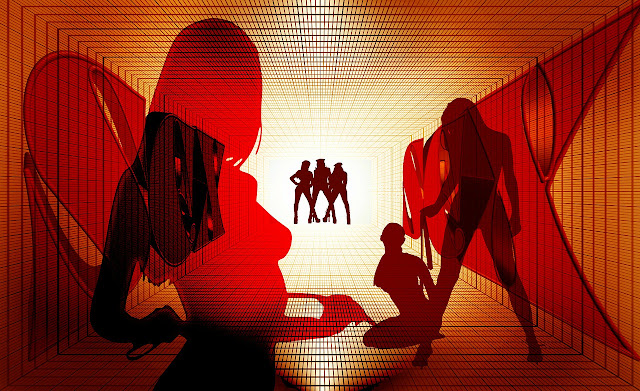In our society, architecture is not merely a practice of creating building structures. It is a means to encapsulate history, culture, and societal norms. As we move from monumental buildings to commercial high-rises, can we pursue a different angle and look at the lesser-discussed structures - brothels?
We know the conception one might have when we say 'brothel'. You may associate it with dubious activities, societal disgrace, or even moral erosion. But what if brothels, as architectural establishments, tell a deeper narrative about our society? What cultural and historical significance could they hold? Can they shed light on matters often tucked inside hushed whispers?
Join me, as we journey through the lanes of legality and moral debates to understand these places from an architectural perspective. This post aims to enlighten, question, and discuss brothels' architectural beauty, their societal standing, and their implications on our community.
Demystifying Origin - Brothels' Historical Backdrop
What was the initial purpose of brothels? The historical portrayal of brothels originates from ancient Greek and Roman civilizations. Mesopotamian documents describe them as public places where sexual services were provided, arguably reflecting society's accepted norms and requirements.
Fast-forward to the 19th century. The inception of "maisons de tolerance" in France transformed the architectural framework of brothels, ushering in an era of elaborately designed, legalized establishments, demonstrating their societal acceptance.
Today, brothels are diverse – some are decriminalized, others flourish illegally, while many operate sophisticatedly under different guises. This diversity reflects the varied societal perspectives about their existence and function.
Architecture And Design - Studio Or Stigma?
From grandeur Victorian Era structures to modest wooden cottages, brothels embody a wide range of architectural styles. In history, many of these buildings stand as a testament to exquisite craftsmanship, intricate designs, and societal status.
The 'Wild West' brothels in the United States, with their wooden façades and lavish draperies, harken back to a booming economy and society's acceptance of 'soiled doves'. The upmarket maisons in France, with their grand furniture and tiled floors, depict a cultural acceptance of courtesans and pleasure houses.
The modern-day brothels, like Nevada's legal establishments, are diverse - from trailer parks to posh villas, showcasing a juxtaposition of socioeconomic statuses and cultural views.
Legal Brothels – A Shield Or A Sword?
As we delve into the legality of brothels, several perspectives come to light. In regions like Nevada, where brothels are legal and regulated, they are a part of the formal economy, providing a safer environment for sex workers.
These establishments comply with health standards, ensuring periodic medical check-ups for their employees, thereby mitigating the transmission of sexually transmitted diseases and providing a healthier atmosphere for both workers and customers.
However, critics argue that legalizing brothels can potentially escalate human trafficking and sexual exploitation. It's a debate of safety versus morality, a discussion of protection against potential harm.
Socio-Cultural Significance And Changing Views
Brothels not only mirror societal views about sex work but also provoke discussions on the subject. They offer an insight into times when sex work was supposed to be a celebrated, esteemed profession, challenging our modern discomfort with it.
From a cultural perspective, brothels have often served as a source of artistic inspiration. They have been portrayed widely in literature, cinema, music, and even paintings, pointing towards an undercurrent acceptance and fascination within society.
As societal views evolve, the perspective towards brothels is gradually changing - from moral backlash to acceptance and normalization, especially in regions where decriminalization has occurred.
A Case For Preservation And Recognition
History is replete with structures once deemed 'unworthy' but now protected as sites of cultural heritage. Can brothels fall under this category? Should they be preserved and studied for their historical, architectural and socio-cultural significance?
Brothels represent an intricate tapestry of societal norms, art, culture, and economics. They stand as historical markers, hinting at the progression of societal thoughts and acceptance of professional sex work. Hence, their preservation seems justified.
However, the road to recognition is fraught with moral debates and societal stigma. The question remains - are we ready to overlook the contentious nature of these establishments and look at their broader impact on society and culture?
Conclusion: Taking Down The Veil – Reflections On Brothels
Brothels, in their diverse forms and functions, reflect depth and richness in our history, architecture, and societal norms. Their existence nudges us to question our prejudices and initiate dialogs on topics we often choose to avoid.
The exploration of brothels' architectural dynamics, their journey through legality, and societal implications, is not so much an endorsement of sex work, but a reviewing of societal perceptions, attitudes, and a case for heritage preservation.
It's about time we unpack the baggage of stigmatization and acknowledge the multifaceted layers of these establishments. Perhaps it's time to take a different road - one that recognizes their historical, architectural, and cultural significance, separately from their moral implications.

.jpg)





No comments:
Post a Comment